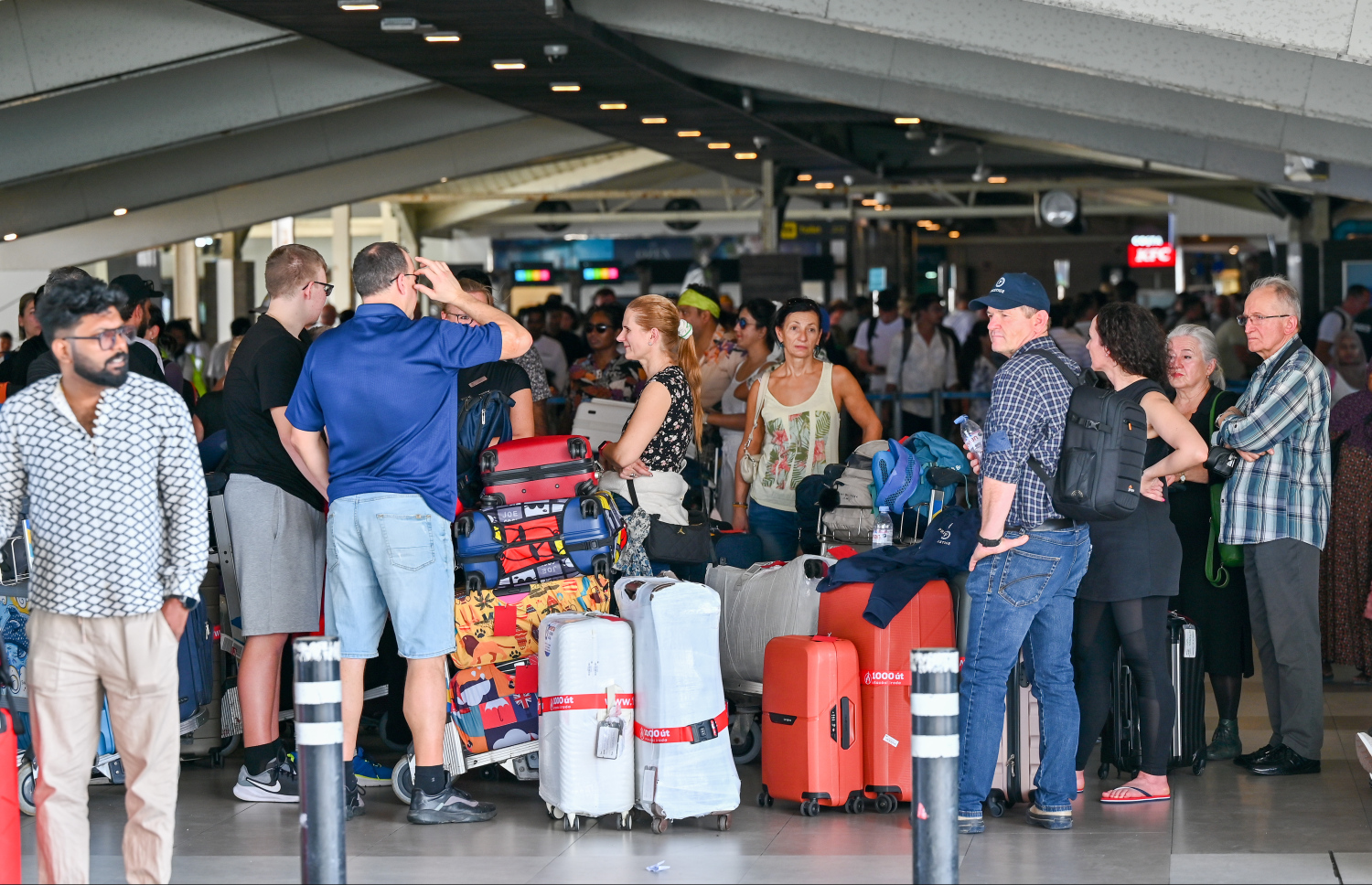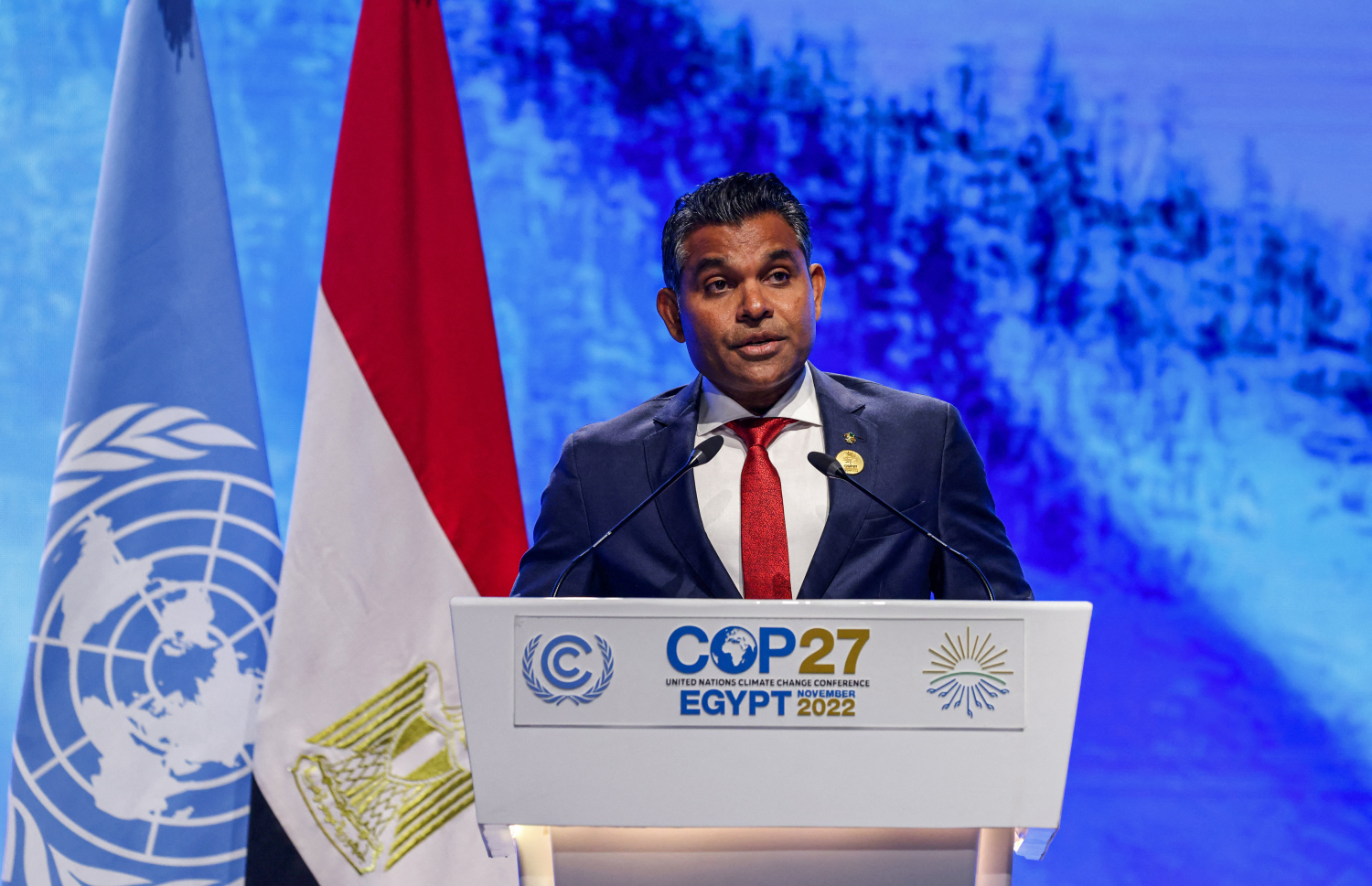Maldives, a shimmering necklace of coral islands, has transformed from one of the world's poorest nations in the 1980s to a middle-income country, largely thanks to its booming tourism industry.
This rise is a testament to the country’s dynamic economic model, driven by a strategic vision that continues to evolve and embrace both opportunities and challenges faced.
Tourism Powerhouse in Changing Tides
At the heart of the Maldives success story lies its vibrant tourism industry. Since its inception in the early 1970s, tourism has been the primary engine driving economic growth, directly contributing over 20 percent to GDP and fostering development across a wide range of domestic sectors including trade, construction and telecommunication.
The ongoing expansion of Velana International Airport (VIA) is poised to further enhance this sector, promising even greater connectivity and tourist arrival. In 2024, the tourism sector demonstrated an impressive 8 percent growth, reflected in a significant increase in total arrivals and bed nights.

Beyond its iconic resorts, the Maldives has long relied on fisheries as a pillar of its economy. Once considered the nation’s lifeblood, the sector has seen its role diminish in recent years as employment shifts towards the service industry.
In 2024, fish exports temporarily recalibrated, with volumes falling by 49 percent; a sharp contraction that has prompted calls for strategic re-evaluation and diversification. Efforts are now under way to modernize management practices and secure the industry’s long-term sustainability.
The construction sector- another key driver of economic growth, buoyed by public and private investment since late 2014 also contracted heavily in 2024, recording a 71 percent decline in activity alongside a drop in construction-related imports.
As a Small Island Developing State (SIDS), Maldives faces a unique set of challenges, from its dispersed geography to the constraints of a limited domestic market. Yet these same characteristics can spur innovative solutions and foster strategic partnerships. The government’s pledge to provide essential infrastructure across its islands, though costly, underscores a commitment to inclusive, nationwide development.
Macroeconomic Foundations
Maldives economy has demonstrated resilience and growth, especially post-pandemic, with real GDP growth of 4.7 percent in 2023 and 5.1 percent in 2024. Maldives current account deficit contracted from 23.4 percent of GDP in 2023 to 17.8 percent in 2024, a good sign largely attributed to improvements in the services account surplus driven by the tourism sector.
Looking ahead, projections by central bank Maldives Monetary Authority (MMA) indicate a further narrowing to 12.5 percent of GDP in 2025, buoyed by expected growth in tourism and increased government grant inflows which are anticipated to offset higher import expenses and interest payments on state debt.
According to MMA’s Quarterly Economic Bulletin, government revenue, excluding grants, fell by MVR 166.7 million in the final quarter of 2024 compared with the same period in 2023, totaling MVR 7.6 billion. The drop was driven by lower non-tax revenue, although tax revenue rose over the year.
Tax revenue made up 73 percent of total revenue, rising by MVR 85.3 million to MVR 5.6 billion. The increase was led by higher import duties, up MVR 55.2 million, and airport service charges, up MVR 25.7 million.
This was offset by a MVR 64.4 million drop in business profit tax, despite a MVR 29 million gain in withholding tax. Goods and services tax revenue also fell slightly, with TGST falling by MVR 8.2 million and GST by MVR 600,000.
Non-tax revenue accounted for 27 percent of the total but fell by MVR 233.4 million to MVR 2.1 billion. This was mainly due to a steep drop in interest, profit and dividends, with cross-subsidy earnings down MVR 353.1 million and state owned enterprise dividends down MVR 149.8 million. The fall was partly offset by higher land acquisition and conversion fees, up MVR 262 million, and a MVR 33.2 million increase in other fees and charges. Resort lease rents, however, fell by MVR 87.8 million.
Government spending, excluding debt repayments, climbed by MVR 1.1 billion to MVR14.4 billion, driven by higher recurrent and capital expenditure.
Recurrent expenditure amounting to two-thirds of the total, rose by MVR 828.9 million to MVR 9.3 billion. The rise was led by higher administrative and operational costs, up MVR 304.1 million, including more spending on grants, contributions and subsidies, particularly other grants and Aasandha health scheme. Salaries and wages rose by MVR 207.4 million, with allowances up MVR 105.7 million. Capital expenditure made up the remaining 35 percent, increasing by MVR 226.1 million to MVR 5.1 billion.
Navigating Parallel Markets
Rationing of foreign currency by MMA has led to a thriving parallel market where the dollar trades at a significant premium, reportedly ranging between MVR 19.10 to MVR 20 per dollar in the black market compared to the official exchange rate of MVR 15.42.

Addressing these foreign exchange dynamics, MMA has implemented measures to strengthen the financial system. Recent initiatives include increasing the mandatory requirement for local banks to sell USD to MMA from 60 percent to 90 percent of their USD proceeds from tourism sector businesses in June this year.
This follows regulations introduced in October 2024 and later incorporated into the Foreign Currency Act in January, requiring tourism businesses to exchange either a fixed amount of USD per tourist, based on their category, or 20 percent of their monthly revenue.
While MMA reported more than USD 25 million in deposits from tourism operators in January 2025, indicating improved foreign exchange availability and a more stable financial system, the effects on the ground have been mixed. Several tourism businesses have opted to pay part of staff salaries in local currency, reducing earnings for workers who had previously benefited from parallel market exchange rates.
On the policy side, MMA has moved to further ease foreign currency pressures. Effective 24 July 2025, it reduced the minimum reserve requirement for foreign currency deposits from 7.5 percent to 5 percent and increased USD allocation to banks for commercial purposes, aiming to boost supply and support business liquidity.
Steering the Ship: Fiscal and Monetary Reforms
The government’s budget reached MVR 49 billion in 2023, with more than half allocated to recurrent expenditure. The proposed 2025 budget projects a deficit of MVR 9.4 billion, equivalent to 7.8 percent of GDP.
In 2024, Maldives Inland Revenue Authority (MIRA) collected MVR 28 billion in revenue, of which MVR 23 billion came from taxes. Higher GST rates have boosted collections but also accelerated the need for decisive expenditure reform. Key priorities include overhauling the Aasandha health insurance scheme, rationalizing state-owned enterprise contributions, transitioning to targeted subsidies, and reprioritizing public investment projects to optimize resource allocation.
The Fiscal Responsibility Act (2013) provides a framework for transparent and accountable governance, aimed at steering the country towards fiscal stability.
MMA implements multiple measures including the minimum reserve requirement, open market operations, standing facilities and the foreign exchange swap facility to manage liquidity and support sustainable growth while adapting to changing economic conditions.
The IMF and World Bank’s 2023 Financial Sector Assessment Program (FSAP) reports provide a roadmap for further strengthening the financial system, with recommendations to enhance systemic risk mitigation, refine policy frameworks, and bolster banking regulation and supervision. These reforms are being incorporated to build a more resilient financial sector capable of sustaining the nation’s long-term growth ambitions.
Climate's Shadow
Maldives’ economy is set for robust growth in 2025, with MMA and the Ministry of Finance and Planning forecasting real GDP to rise by 4.5 percent under the baseline scenario and 5.6 percent in the alternative scenario. The projections, released in May, mark a slight downward revision from earlier estimates, reflecting a dip in tourist bed nights during the first quarter of the year.
Sustaining this momentum will require decisive policy action and structural reforms aimed at diversifying the economy. Key priorities include improving the business climate, strengthening governance, expanding trade and investment, and boosting skills development which are all critical to generating new opportunities beyond tourism.
The outlook for the external sector is also positive, with the current account deficit expected to narrow further by the end of this year. This improvement will be driven largely by tourism revenues and higher inflows of government grants.
Perhaps the most striking aspect of the Maldives’ economic vision is its leadership in climate resilience. As one of the world’s most climate-vulnerable nations, Maldives has committed to innovative adaptation strategies and forged global partnerships to address environmental challenges.

World Bank’s Country Climate and Development Report (CCDR) sets out a framework for creating fiscal space, mobilizing climate finance, strengthening ecosystem resilience, and advancing green transitions in key sectors. Measures such as phasing out fossil fuel subsidies, mandating renewable energy targets for resorts, and promoting green mobility position Maldives as a model for sustainable development.
These climate strategies are embedded in the government’s National Development Plan and National Spatial Plan, which aim to steer the country towards an inclusive, climate-resilient nation through better management and allocation of resources across the islands.